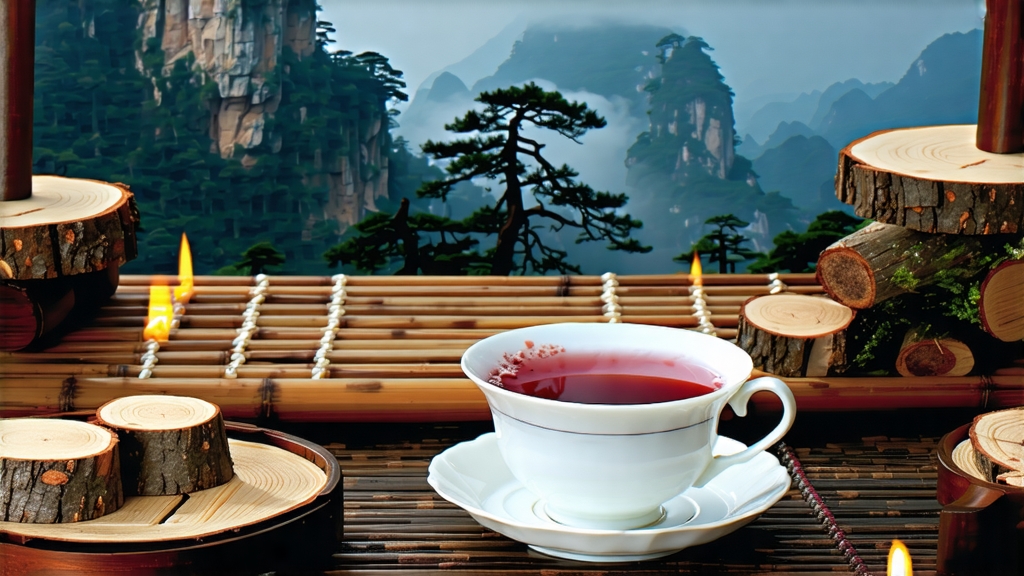
Long before English breakfast blends and afternoon tea services, there was Lapsang Souchong—the original black tea that astonished European merchants when it reached Amsterdam in 1604. Grown in the granite gorges of Tongmu Guan, a protected enclave within China’s Wuyi Mountains, this tea carries the dual honor of being both the earliest black tea ever documented and the only one legally defined by its smoking process. Its name itself is a linguistic relic: “souchong” refers to the fourth and fifth leaves traditionally picked below the prized bud sets, while “Lapsang” is the romanization of “Lazheng,” the village where the technique was born.
History records that the smoking method arose by accident during the late Ming dynasty, when passing armies forced farmers to speed-dry their leaf over available pine fires so that the crop could be moved before the soldiers arrived. The Europeans, already enamored of Wuyi oolongs, found the resulting wine-dark liquor irresistible; by the early Qing, Lapsang Souchong had eclipsed green tea in London auctions and was commanding prices higher than silver. The East India Company’s ledgers from 1684 list it simply as “bohea,” a corruption of “Wuyi,” and for two centuries any black tea shipped out of Xiamen was likely this smoky ancestor.
Today the tea is classified into two distinct styles. The traditional export grade, still prepared for Russian and Middle-Eastern markets, is withered over burning Masson pine logs, then pan-fired and rolled before a final hot-smoking in bamboo sieves suspended above resin-rich heartwood. The newer, unsmoked “Zheng Shan Xiao Zhong” was developed in 2005 for domestic connoisseurs who wanted the honeyed minerality of Tongmu terroir without the campfire note. Both come from the same two cultivars—Xiao Ye Zhong (small-leaf) and the even rarer Da Bai Ye (big white)—yet diverge in the final act, one acquiring amber clarity, the other a tarry perfume that clings to the fingers like cigar box cedar.
Making the smoked version is a choreography of heat, haste, and wood. Fresh leaves are picked at dawn when the canyon air is still cool; any later and the sun will volatilize the pine vapors before they can fix inside the leaf. After withering on screens set above slow-burning logs, the leaf is hand-twisted until the cell walls rupture with a soft crackle. Oxidation proceeds in cedar-lined chests for three to four hours, shorter than most black teas, because the subsequent smoking will continue color development. The critical step is the la xun (“pull-smoke”): trays of oxidized leaf are stacked seven layers high inside a brick oven while fresh pine boughs smolder below. Masters gauge readiness not by sight but by sound—when the sappy hiss fades to a whisper, the leaf has absorbed just enough resin to perfume ten infusions without masking the natural cocoa sweetness.
To brew Lapsang Souchong gongfu style, use a small porcelain gaiwan or Yixing zi-sha teapot seasoned only with black teas. Measure 5 g for every 120 ml of water, heated to 95 °C; anything hotter will drag tannins forward and turn the smoke acrid. Rinse once, then steep the first infusion for five seconds, adding two seconds each subsequent pour. The liquor should glow like antique mahogany and carry a rim of golden foam—evidence of the pine oils emulsifying. Early steeps taste of longan and burnt cream; mid-steeps reveal a cooling camphor note that the Chinese liken to “old fir honey”; by the sixth, you will taste only Wuyi mineral, as if rainwater had run through quartz and moss.
Western-style brewing can also succeed if you respect the leaf’s density. Use 2.5 g per 250 ml mug, water just off the boil, and a three-minute timer. Decant immediately through a strainer; leaving the leaves to idle will paint the cup with creosote. A slice of lemon is traditional on the Trans-Siberian railway, but purists insist the only accompaniment should be a moment of silence so the aroma can summon pine forests in winter.
Professional cupping judges evaluate Lapsang Souchong on five smoked-related metrics. First, the “fire fragrance” (huo xiang) must be clean, free of kerosene